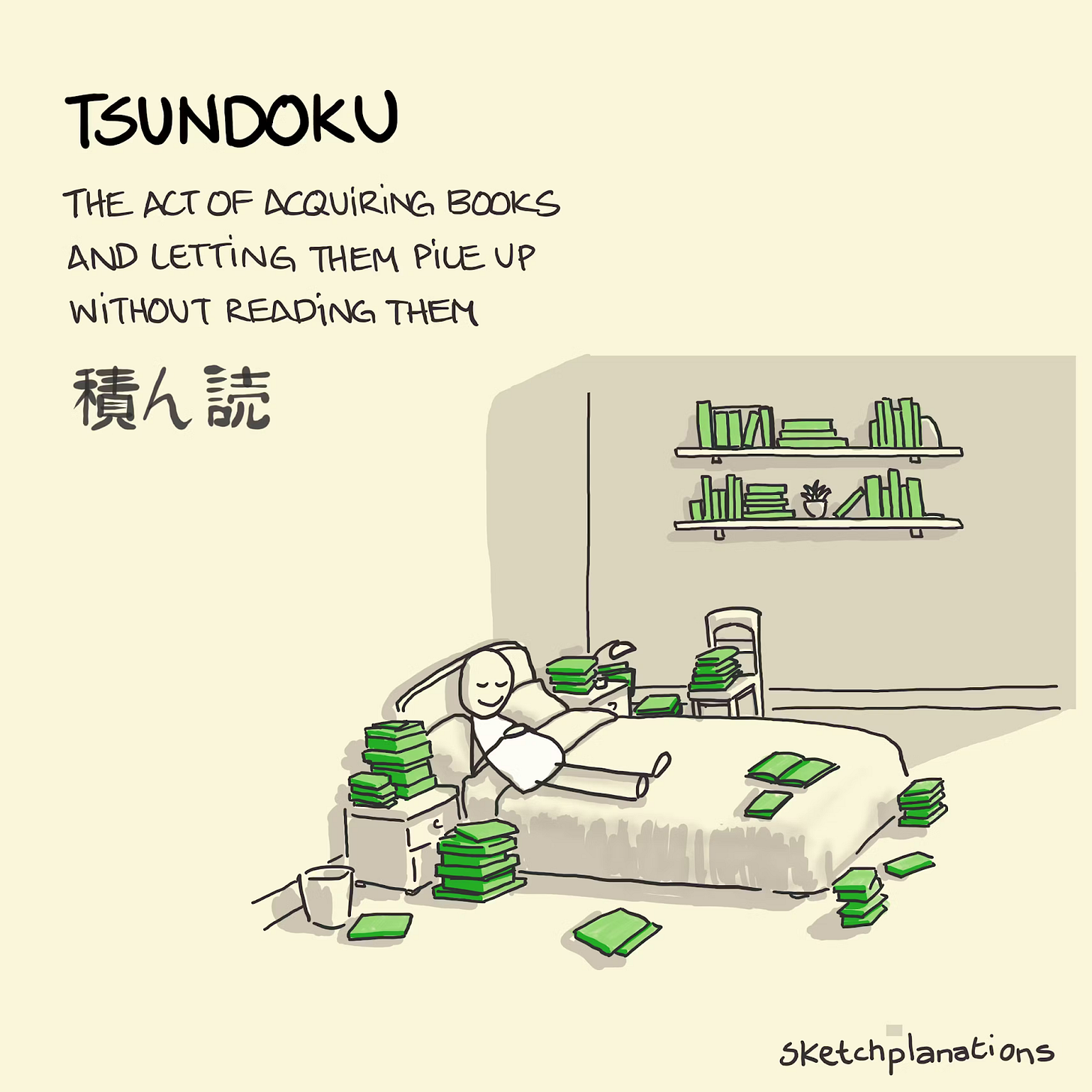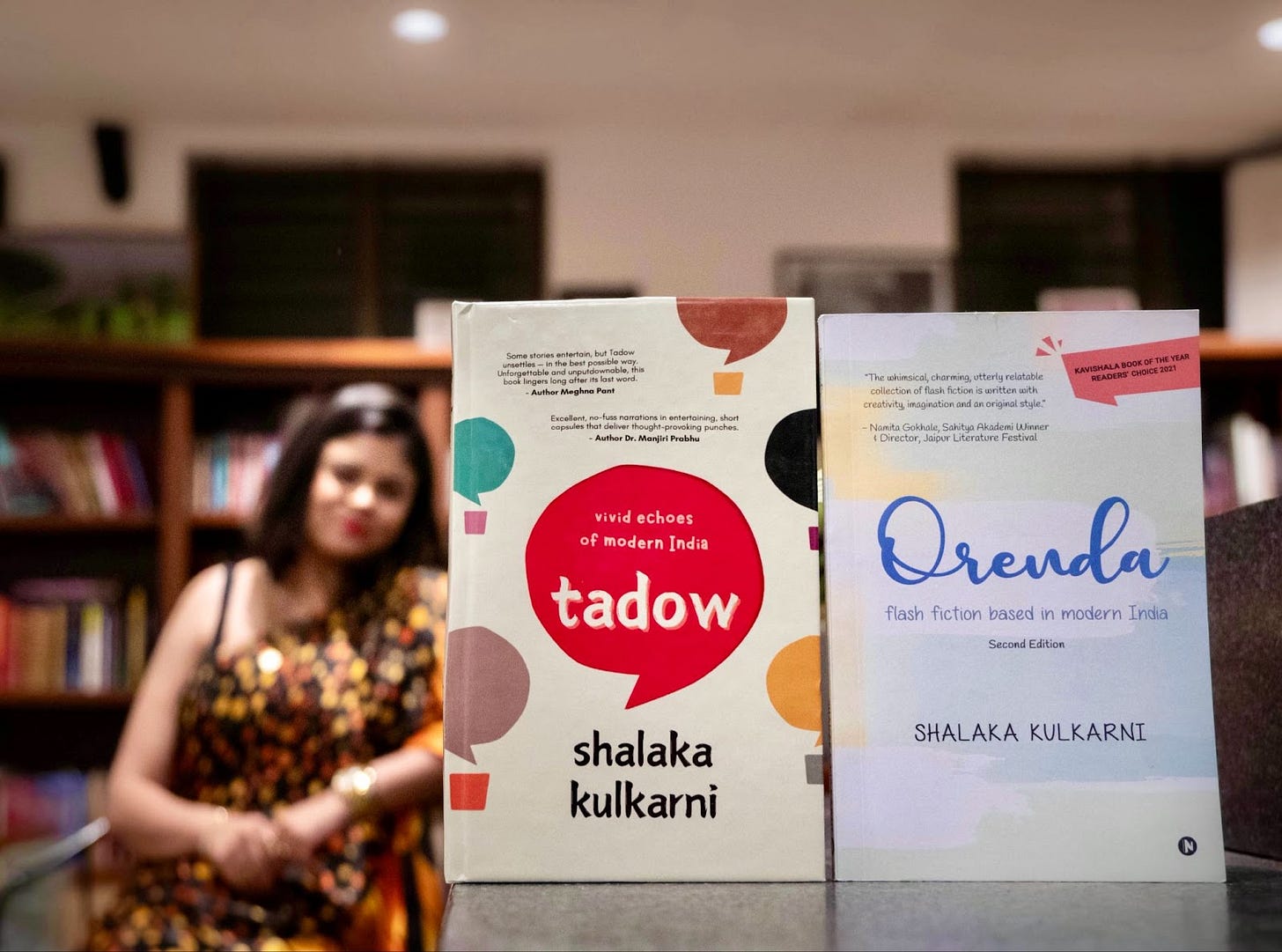वाचाल तर वाचाल. Vachal tar Vachal.
My Marathi-speaking friends would happily write a thesis on this tiny thunderbolt of a phrase. In Marathi, वाचणे (vachne) is “to read,” and वाचणे (vachne again!) is also “to be saved.”
Which is why the proverb lands like a wink: read, and you shall be saved. Two meanings of holding hands in five syllables. Tell me a better elevator pitch for literacy; I’ll wait.
Languages are damn cute, man!
But yeah, reading wasn’t always this… “performative.” Right? I want to go back to the times when reading was a verb. Swati Rai nails the ache of today’s times:
Instagram has made reading look immaculate: sunlit flatlays, annotated pages like airbrushed cheekbones, latte art parked beside linen spines. I mean, I did photograph my books that way for marketing purposes.
Beauty isn’t the villain. Reading has always had an aesthetic (dust motes in library light, the papery musk of a dog-eared Penguin). What’s shifted is the centre of gravity: from interiority to image. Bookstagram often turns prose into performance (just like all the Instagram aesthetics).
Props to the publishing PR and marketing teams because we’re now buying books for their cover art, their colour palette, their ability to pair well with a matcha latte and rattan chair. But let’s ask the harder question: Are people really reading the books they buy?
Are we reading for display, and for sharing “Stories” instead of reading for discovery?
And then all this leads to tsundoku.
It is the Japanese habit of buying books and letting them pile up unread. It’s older than our feed. (Also, it is an anti-library that reminds us how much we still don’t know.)
A Nielsen report revealed that 47% of millennials admit to purchasing books they never finish, while 29% say they buy books just to own them.
With my second book, Tadow, many posted the cover, tagged me, and 4 months later, some still haven’t finished. I got to know when I asked them to write Amazon reviews. It is flash fiction, man, come on! 🙁
We are living in a world where algorithms are louder than thoughts (and intent).
A lot of people have asked me to create audiobooks and reels about stories from Orenda and Tadow. I have always answered this.
“Some stories are to be seen, some stories are to be heard, and some stories are to be read. Mine are to be read and felt, at least once, if not again.”
Now, the gentle counterweight is my friend Mithun Kulkarni’s point, which I love:
A decline in long-form reading isn’t inherently good or bad; human behaviour evolves with the medium. Convenience routinely beats perfection. We all know slow-cooked biryani tastes better than microwaved food, yet most days we choose the microwave.
Same with knowledge: AI summaries over central-library scavenger hunts; allopathy over Ayurveda for speed and standardisation. Some will keep the taste for reading and writing books, and that’s fine.
And here’s another piercing take by Author
:Nonetheless, we definitely need to learn how to read when no one’s watching.
Sink into novels when you want to feel. Keep the nook and the lamp, sure, but let the 80 GSM page outshine the post. Celebrate the aesthetic without letting it hollow the act.
For me, for 24 years and counting, literature has been nothing short of worship.
I understand today’s reality that our attention is rare and feeds are ravenous. But here’s what I truly fear:
When the filters fade, when the shelves gather dust, will we still know how to operate without needing to post about it? Will we still be curious enough to read something without knowing if it’ll “perform”?
As a writer, I truly hope so. Because I strongly believe that somewhere, quietly, a sentence is still waiting to save someone.
Here’s to living and loving in sentences - yours, mine and ours.
Writeously yours,






